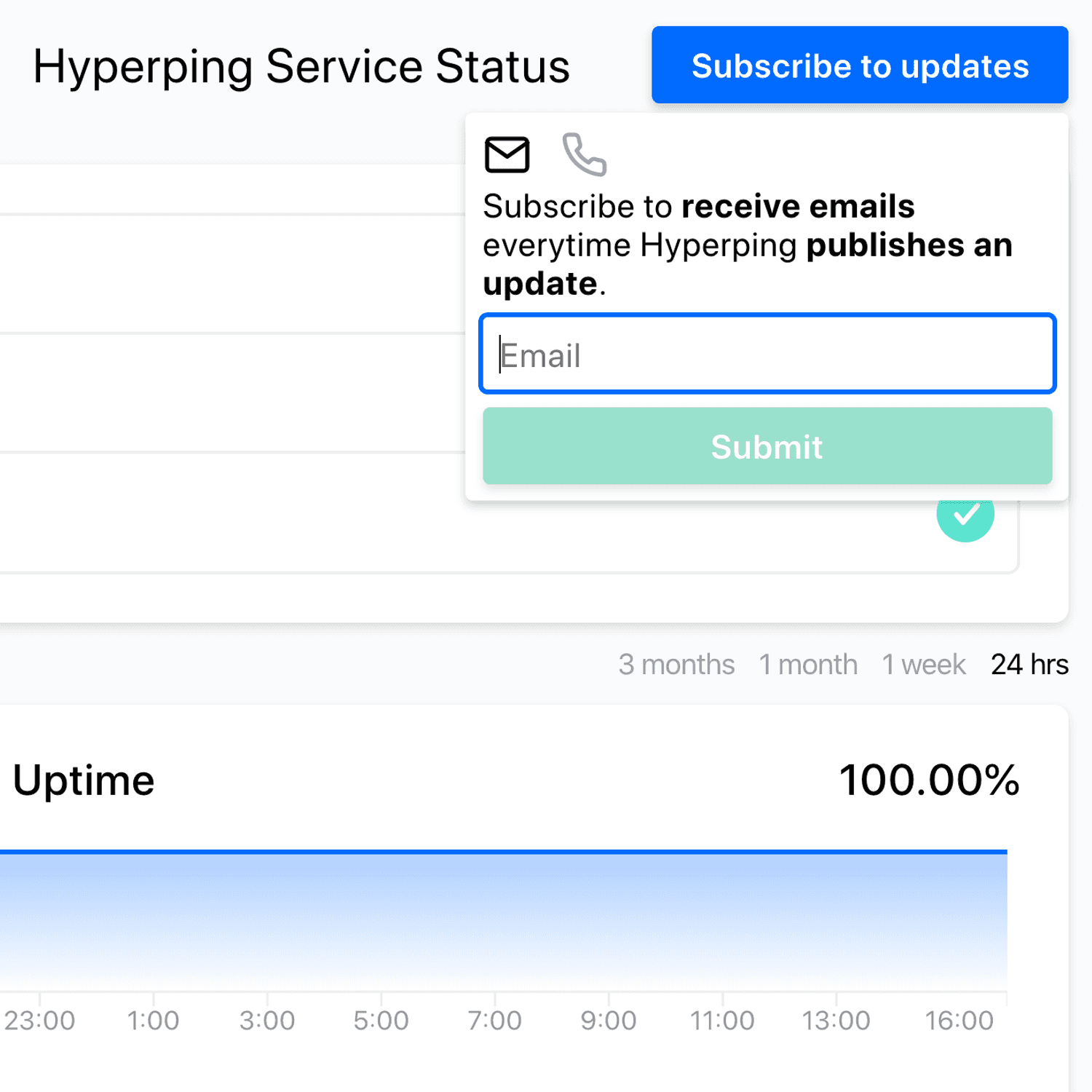
In this post, I would like to expose the mindset that helped me have my very first business profitable since day one. This is not a proven methodology, but I intend to replicate the way I started this business to maybe validate it.
Before getting started, here are some metrics to put yourself in the context:
- 📅 Started in October 2017 (19 months in at the time this post is written)
- 👶 Started it as a side project while having my first jobs as a junior frontend engineer (with little coding experience)
- 🐌 Takes 10 to 15 hours a week in average, full-time since I quit the corporate world
- 💰 $1401 MRR, ~$100 of monthly expenses
- 🔥 Fired from 9-to-5 in April 2019
Motivation
I think that motivation comes from my survival instinct. At 16 years old, my dad, who was in charge of my brother and me and who just divorced with my mom, completely renewed his life and decided to put us in a separate apartment in the next village. From this moment, I had to figure out everything by myself. Inevitably, I failed high school and later dropped out. At 19-years-old, I took a flight ticket straight to New York, with 500€ in the pocket. That was suicide. There, (with back and forth trips to Europe, considering my tourist "visa") I tried to survive by working for some entrepreneurs and small startups based in one WeWork, in Chelsea, Manhattan.
After a year and a half of wandering with a 0€ balance, I settled in Paris and got my first real, legal, full-time job as a junior frontend engineer. I was safe.
While growing in that environment with all those entrepreneurs, I:
- fell in love with SaaS businesses — Automating, passive incomes, remote work. Those are the keywords linked to SaaS businesses that hooked me.
- started to love to do everything by myself — the feeling of producing everything from design to marketing, all by myself.
- was fascinated by their independence — basically being location, financially and time independent.
I was set to take my revenge. I accumulated enough knowledge, inspiration, and skills to get started with winning my independence.
Inspiration and Mindset
When I first entered the Startup world in Sentier district, Paris (also called Silicon Sentier), I thought that every single employee, especially developers, would all have this entrepreneurship spirit and that I would hear and learn from their projects and experiences every day.
I have never been so wrong.
It took me almost a year, right after I entered a second startup, to confirm that, besides the 2 or 3 co-founders (that did not hire you to talk business), 99% of employees are not taking advantage of their tech knowledge and skills.
I talked to sales, marketings, questioned developers about their side hustles that would take them free from the rat race. A lot of them had ideas, but no one actually made it nor was fully interested like I was.
In everyone's mind, it takes 3 founders, millions of VC money and a hundred employees to make a startup to call yourself an entrepreneur and live off your own work.
You either make the new Airbnb or nothing.
There was no in between.
This was when I was hearing stories from modest businesses and yet with large incomes.
How can I be like them?
So I had to look for inspiration elsewhere, and a year has passed. My brain was already working hard to overcome my impostor syndrome as a junior develop and gain as much knowledge as I could on how I could create a SaaS application from front-end to back-end, to sales, marketing, and customer success.
I wasn't 100% focused on learning how to be the best at coding like my colleagues were, which always made me feel a step behind. That was not easy to handle every day. I am also not a natural good learner. I need to repeat things over and over before acknowledging them.
At the same time, I signed up for Twitter and discovered communities such as wip.chat, and started to follow interesting people. This allowed me to meet like-minded people (even though I was just a wannabe at the time).
I started reading stories from hunter.io, Josh Pigford, or Pieter Levels, who you may already be familiar with. If not, reading their stories is how you will get into this very bootstrapped, "maker", "indie hacker" mindset.
Here are some stories and links that triggered my curiosity:
- Hunter.io's blog post on staying small and happy — When Hunter reached $30k MRR with no funding: https://finkelstein.fr/not-raising-funds-to-stay-small-and-happy
- Reddit/r/Entrepreneur Beard business — The amazing story of a beard oil brand shared in real time on Reddit: https://www.reddit.com/r/Entrepreneur/comments/2bn32w/so_does_this_mean_im_a_millionaire_beardbrand/
- The open-startup page from Baremetrics — https://baremetrics.com/open-startups
Anecdote: as I spent my first 6 months in Paris in a Hacker House (room-sharing, packed, unproductive environment), I liked to use the startup's cozy office to work until 10/11pm every evening and be very productive.
Often, some employees (including founders) were coming back to the office to pick up something and were seeing me working in the evening. They were surprised all the time.
At a workday, one designer started joking that the office was my primary residence, and added: "This is so sad! You should go back home and chill!".
That became one great motivation.
Getting real
Once I figured all this out and discovered this whole ecosystem, it was time to get started for real. I spent a tremendous amount of time playing and experimenting with no end that I needed some methodology.
Here are some actionable tasks that I did to get started:
1. Take a highly competitive, B2B SaaS market.
- Why B2B? Because businesses have the money to pay. You don't want to handle consumers for small amounts. If you had this "app idea", forget it.
- Why highly competitive? Because the market is already confirmed. It is much easier to take a piece of the pie than creating a new one.
- SaaS because you want recurring, thus predictive, revenue. Another buzzword for it is "passive income".
I personally love automated tasks (cron job), gazillions of API calls. I was already having fun with setting up different servers across the globe, and ping sites to see how fast they respond to it. I was made for the APM (Application Performance Monitoring Software) market.
2. Do a benchmark of the market's top 10 actors
Now, find the top 10 actors of the market and benchmark them:
You have to put in mind that in most markets, major actors are 10/15 years old settled companies with over a hundred employees, that are still maintaining outdated technologies with terrible UI/UX, and that their cycle of shipping is much slower than you alone.
You can now set up a dedicated server in a minute for $5/mo, create insanely fast sites with Gatsby/Netlify, micro-services (AWS, Zeit), that weren't so easy to set up at the time.
When listing them:
- list their features
- what is their market-orientation (SMBs, Enterprises) by listing their pricing and business models
- rate how their UI/UX look (it matters a lot for people nowadays). It includes their branding spread on social media, the landing page and the app (dashboard) itself.
Once you documented all that, take the core 3/5 features, one market that would be interested in this one feature at a more competitive price
3. Make a 100 days MVP, no more.
MVP for Minimum Viable Project. The day you push your first commit, you must launch your product 3 months or 100 days later. No matter what. Make yourself accountable by sharing your deadline with your friends and your little like-minded internet friends on Twitter.
You may have seen those nicely marketed success stories from makers doing "12 startups in 12 months". Don't do that. You want to sell to respectable businesses, and you want to be proud of your well-polished product.
- Be transparent about the process. Share your thoughts and decisions. People love to read stories about the business they pay to. This will make your company feel "human".
- Find beta users. They will become necessary, as soon as you can. Do not stop asking for feedback and promise them nice discounts once it becomes paid. You will figure out that most people genuinely just love to help when you ask for it.
You will, for example, find those beta users from communities on Telegram, from a post on Reddit (such as /r/entrepreneurs or /r/sideprojects) or your first thread on Twitter.
4. Launch it!
There are multiple platforms where you can launch your new baby. The purpose of this launch day is to:
- grow the number of people around you in your ecosystem (more followers, more readers of your blog...)
- create awareness about your product
- engage a lot of signups
- eventually get your first paid user! (offering discounts)
5. Iterate, adapt, ship
Things become different once you launched and that you have actual people using your product. Try to engage with every single one of them. Look up for the business they work at and try to figure out what would be their use cases using your site. With this information, send personalized emails and ask what similar tool they are already using, what they like/did not like about it, and what do they expect about yours.
A dozen of users became customers at the beginning of their trial after they reported bugs, which I fixed within 15 minutes, while we engaged a human conversation about our respective businesses and the life as founders (when your interlocutor is one too). In most cases, they buy the human behind the product, because they enjoyed sharing and hearing stories. This is also when they bring true, sometimes harsh, feedback.
Hyperping is now starting to look "good" (not trying throwing flowers to me), and a good chunk of users are sending compliments!
UI/UX matter much more today than it did 5/10 years ago, the time when your competitors got started, and that for 90% of them, still have their old designs. Rebranding or refactoring dashboards are year-long projects for companies that are running with 50-100 employees.
Compare https://status.slite.com (Hyperping) versus an established actor in the market: https://status.uptimerobot.com (UptimeRobot).
My point here is that UI and simplicity can be good selling points. But it requires iteration over iteration. Hyperping's dashboard is at its 3rd iteration while the home page is at its 4th. But, being solo is your biggest advantage: you are able to iterate fast.
To make decent-looking landing pages, I find inspiration from others. I built a curated collection of good looking, live, non-dribbble landing pages: hyperpixel.io.
Here is my little process:
My taste, because of trends, is periodic. I may love this landing page but then find it outdated the next year. I try to find 3-5 sites that I really enjoy, and pick the best from each: this color palette from this site, the button style/interaction from this other site and the layout of this one, and try to tweak all those parameters to compose my ideal page (I personally love using Sketch).
5. Stay consistent
This is, to me, the most important point. Stay consistent. Ship every day.
This will always pay off at unexpected moments. The compound effect on being consistent is what will create value in your product.
Voilà!
Thanks for reading! This is the very first article I post, so please share your thoughts by tweeting at me at https://twitter.com/sinequanonh.


